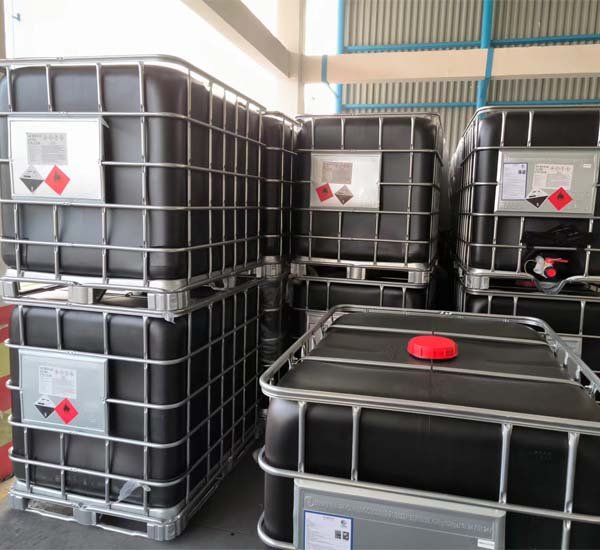Acrylic Acid (AA): A Comprehensive Overview
Acrylic acid (AA) is a crucial organic compound widely used in the production of various polymers and chemical products. Known for its reactivity and versatility, acrylic acid serves as a building block for numerous applications across multiple industries, including coatings, adhesives, textiles, and personal care products. This article provides an in-depth look at the properties, synthesis, applications, and safety considerations of acrylic acid.
Chemical Properties
Acrylic acid is a colorless liquid with a distinctive acrid odor. Its molecular formula is C3H6O2, and it has a molar mass of approximately 72.06 g/mol. The compound features a carboxylic acid group (-COOH) attached to a vinyl group (-C=C-), which imparts unique reactivity.
Key Properties:
-
Reactivity: The presence of a double bond in the vinyl group allows acrylic acid to undergo polymerization, making it a vital precursor for a wide range of polymeric materials.
-
Hydrophilicity: The carboxylic acid group enhances the water solubility of acrylic acid, facilitating its incorporation into water-based formulations.
-
Viscosity: Acrylic acid has a relatively low viscosity, which contributes to its ease of handling in industrial applications.
Synthesis of Acrylic Acid
Acrylic acid is primarily produced through two main processes: the propylene process and the glycerol process.
-
Propylene Process: This method involves the oxidation of propylene, typically using a catalyst, to produce acrylic acid. The process includes a series of reactions that convert propylene to acrolein, which is subsequently oxidized to acrylic acid.
-
Glycerol Process: An alternative method for producing acrylic acid involves the dehydration of glycerol. This process is increasingly favored due to the growing availability of glycerol as a byproduct of biodiesel production. The glycerol process provides an environmentally friendly approach to acrylic acid synthesis.
Applications of Acrylic Acid
Acrylic acid's unique properties make it a valuable component in various industrial applications:
1. Polymer Production
Acrylic acid is a key monomer in the production of superabsorbent polymers (SAPs), which are widely used in products like diapers and feminine hygiene products. The ability of these polymers to absorb large amounts of liquid makes them essential in personal care and medical applications.
2. Coatings and Paints
In the coatings industry, acrylic acid is utilized to produce water-based paints and coatings. Its hydrophilic nature and ability to form films contribute to improved adhesion and durability. Acrylic acid-based coatings offer excellent weather resistance and flexibility, making them suitable for both indoor and outdoor applications.
3. Adhesives and Sealants
Acrylic acid is commonly used in formulating adhesives and sealants. Its strong bonding properties and compatibility with various substrates enhance the performance of these products. Acrylic-based adhesives provide excellent shear strength and durability, making them ideal for construction and manufacturing applications.
4. Textile Industry
In the textile sector, acrylic acid is employed as a finishing agent to improve the properties of fabrics. Its incorporation enhances water repellency, stain resistance, and overall durability, making treated fabrics suitable for outdoor and industrial use.
5. Personal Care Products
Acrylic acid is utilized in the formulation of various personal care products, including skin care and hair care formulations. Its ability to provide moisturizing properties and improve product stability makes it a valuable ingredient in cosmetic formulations.
Safety Considerations
While acrylic acid is widely used, it is important to recognize potential hazards associated with its handling and use. Acrylic acid is classified as a corrosive substance and can cause skin and eye irritation upon contact. Inhalation of vapors may lead to respiratory irritation. Therefore, appropriate personal protective equipment (PPE), such as gloves and goggles, should be worn when working with this compound.
Acrylic acid should be stored in a cool, well-ventilated area, away from heat sources and incompatible materials. Proper waste disposal methods should be implemented to minimize environmental impact, as acrylic acid can be harmful to aquatic life.
Conclusion
Acrylic acid (AA) is a versatile and essential chemical compound with a wide range of applications across various industries. Its unique properties, including reactivity and hydrophilicity, make it a key building block for polymers, coatings, adhesives, and personal care products. As research and development continue to advance in the field of acrylic acid applications, its significance in modern materials science and industrial processes is expected to grow. However, safe handling practices are crucial to ensure the well-being of those working with acrylic acid and to minimize its environmental impact. Overall, acrylic acid represents a fundamental component in the development of innovative materials and products that enhance everyday life.


